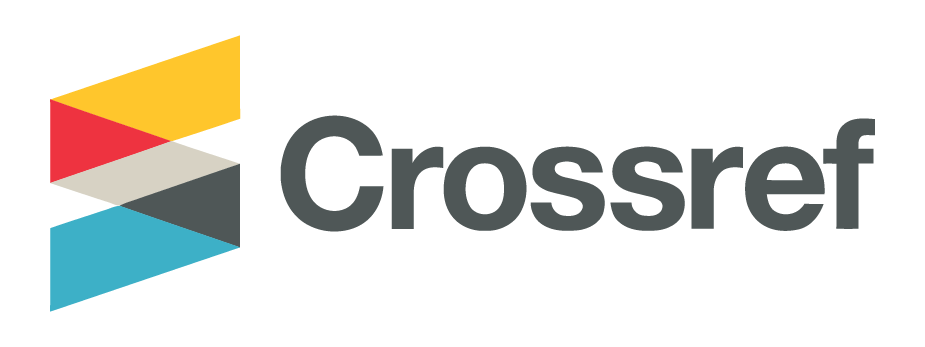Hybrid affine cipher and eigenvector methods for cryptography
DOI:
https://doi.org/10.56764/hpu2.jos.2024.3.3.80-87Abstract
This paper systematically presents a specific application of linear algebra in information security and cryptography, highlighting the crucial role of matrix operations and linear techniques in the design and analysis of encryption algorithms. Specifically, we focus on a method that utilizes linear algebra to enhance the security and efficiency of modern cryptographic systems. A detailed illustrative example is provided to help readers better understand how these mathematical tools are applied in practice. Furthermore, we review existing encryption techniques and propose a new matrix-based scheme that leverages linear algebra to improve data security, optimize the encryption-decryption process, and ensure the integrity and confidentiality of information throughout transmission and storage.
References
[1] S. Boyd and L. Vandenberghe, Convex optimization. Cambridge, UK: Cambridge Univ. Press, 2004, doi: 10.1017/cbO9780511804441.
[2] F. Aleskerov, H. Ersel, and D. Piontkovski, Linear algebra for economists (Springer texts in business and economics), Heidelberg, Germany: Springer, 2011, doi: 10.1007/978-3-642-20570-5.
[3] D. C. Lay, S. R. Lay, and J. J. McDonald, Linear algebra and its applications, 5th ed. Boston, MA, USA: Pearson, 2016.
[4] G. Strang, Linear algebra and its applications, 4th ed. Boston, MA, USA: Cengage Learning, 2006.
[5] F. Neri, Linear algebra for computational sciences and engineering. Cham, Switzerland: Springer, 2019, doi: 10.1007/978-3-030-21321-3.
[6] H. Anton, C. Rorres, and A. Kaul, Elementary linear algebra: Applications version, 12th ed. New York, USA: Wiley, 2019.
[7] J. S. Chahal, Fundamentals of linear algebra, 1st ed. Boca Raton, FL, USA: CRC Press, 2018, doi:10.1201/9780429425479.
[8] N. Koblitz, A course in number theory and cryptography (Graduate texts in mathematics), New York, USA: Springer, 1994, doi: 10.1007/978-1-4419-8592-7..
[9] D. R. Stinson, Cryptography: Theory and practice, 3rd ed. Chapman, MA, USA: CRC Press, 2006, doi: 10.1201/9781420057133.
[10] A. J. Menezes, P. C. van Oorschot, and S. A. Vanstone, Handbook of applied cryptography, 1st ed. Boca Raton, FL, USA: CRC Press, 1997, doi: 10.1201/9780429466335.
[11] S. Andrilli and D. Hecker, Elementary linear algebra, 4th ed. Amsterdam, Netherlands: Academic Press, 2010.
[12] J. DeFranza and D. Gagliardi, Introduction to linear algebra with applications, 1st ed, Illinois, USA: Aveland Press, Inc, 2015.
[13] D. Poole, Linear algebra: A modern introduction, 3rd ed. Boston, MA, USA: Brooks Cole, 2010.
[14] L. S. Hill, “Cryptography in an algebraic alphabet,” Am. Math. Mon., vol. 36, no. 6, pp. 306–312, Jun. 1929, doi: 10.1080/00029890.1929.11986963.
[15] B. Schneier, Applied cryptography: Protocols, algorithms, and source code in C, 2nd ed. New York, USA: John Wiley & Sons Inc, 1996.
[16] N. T. Thanh-Giang, “Applications of linear algebra in encryption,” HPU2. Nat. Sci. Tech., vol. 2, no. 1, pp. 46–52, Apr. 2023, doi: 10.56764/hpu2.jos.2023.1.2.46-52.
[17] S. Singh, The code book: The science of secrecy from ancient Egypt to quantum cryptography, 1st ed. London, UK: Fourth Estate, 1999.
[18] D. R. Stinson, Cryptography: Theory and practice (Discrete mathematics and its applications), 3rd ed. New York, USA: Chapman and Hall/CRC, 2005, doi: 10.1201/9781420057133.
[19] M. Kazemi, H. Naraghi, and H. M. Golshan “On the affine ciphers in Cryptography,” In Informatics engineering and information science. ICIEIS 2011. Communications in computer and information science, 2011, pp. 185-199, doi: 10.1007/978-3-642-25327-0_17.
[20] B. Vellaikannan, Dr. V. Mohan, and V. Gnanaraj, “A note on the application of quadratic forms in coding theory with a note on security,” Int. J. Comp. Tech. Appl., vol 1, no 1, pp. 78–87, Jun. 2010.
Downloads
Published
How to Cite
Volume and Issue
Section
Copyright and License
Copyright (c) 2024 Anh-Thang Le, Thanh-Huyen Pham Thi, Van-Dong Vu, Mai-Thanh Hoang Thi, Bich-Ngoc Nguyen Thi

This work is licensed under a Creative Commons Attribution-NonCommercial 4.0 International License.







